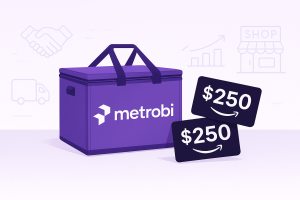“No one wants your discount codes.” Hard truth? Yes, but it explains why so many referral program ideas fail, highlighting the need for a robust referral marketing strategy. The best referral program ideas aren’t built on generic rewards—they’re crafted from a deep understanding of what motivates customers to become advocates.
I’ve watched companies spend thousands of dollars on referral program ideas that yielded zero results. Meanwhile, others are turning their customers into marketing engines that encourage customers to bring in qualified leads daily. The difference isn’t luck or budget size—it’s strategy, especially in fostering customer loyalty.
Consider this: 92% of consumers trust recommendations from friends and family over all forms of advertising. Yet, most businesses still approach referrals as an afterthought rather than a core growth channel, missing out on the power of word-of-mouth marketing.
Here’s something you might not know: the psychology behind a successful referral isn’t about the size of the reward—it’s about the social currency exchanged when someone makes a recommendation. When your current customers refer your business, they’re putting their reputation on the line. That’s far more valuable than any discount you’re offering or rewarding customers with. To deepen your insight into what motivates buyers, exploring concepts of sales psychology can be incredibly valuable. Understanding how customers make decisions and what triggers their actions can help you design referral programs that truly resonate. For those interested, a comprehensive overview on the nuances of sales psychology offers actionable strategies that align well with effective referral marketing techniques.
What if your referral program idea could tap into that social dynamic while also providing genuine value to both parties?
The most effective referral program ideas don’t just create transactions—they strengthen relationships. They make customers feel like valued partners rather than walking billboards.
In this guide, I’ll walk through proven referral program ideas that work in 2025. From setting measurable goals to selecting perfect incentives, you’ll learn how to build a referral system that generates consistent results.
Ready to transform your existing customers into your most powerful marketing asset? Let’s begin.
Save 80% of delivery management time
We handle everything:
- Dedicated operations manager
- Real-time tracking dashboard
- Automated customer notifications
- Urgent issue resolution
Creative Referral Program Ideas
Build a strong referral program by setting clear goals, choosing the right products, and offering valuable incentives
Make referrals easy with technology tools and promote your program effectively to existing customers
Track and measure results to continuously improve your referral strategy
Step 1: Define Goals and Key Metrics for Customer Retention
Before launching a customer referral program, you need to establish clear goals. You can start by asking what you want to achieve with your referral strategy and exploring various customer referral program ideas. Are you looking to increase your customer base? Boost revenue? Expand into new markets? Your goals will shape every aspect of your program design.
Next, select specific metrics to track your progress. Common metrics include new customer acquisition count, conversion rate of referrals, cost per acquisition compared to other channels, and customer lifetime value of referred clients. For example, if your goal is growth, you might focus on the number of new customers and conversion rates. If you’re more concerned with profitability, you might track the lifetime value of referred customers, which are 25% higher than non-referred customers, according to recent data.
Setting SMART Goals
You should make your referral program goals SMART (Specific, Measurable, Achievable, Relevant, Time-bound). Instead of “get more customers,” try “increase our customer base by 15% through referrals within the next six months.” This approach gives your team clear targets and makes it easier to evaluate success.
Document your goals and metrics in a tracking system. This could be as simple as a spreadsheet or as complex as dedicated referral software. The important thing is having a system that allows you to monitor progress consistently and make data-driven decisions.
Step 2: Choose a Referable Product or Service To Keep Loyal Customers
Not all products or services generate the same level of referral enthusiasm. Focus on offerings that customers naturally want to talk about. These typically have at least one of these qualities: they solve a significant problem, deliver unexpected value, or create a memorable experience, which can inspire referral marketing ideas.
Look at your existing products and identify which ones receive the most positive feedback or social media mentions. These are likely your most referable offerings. Customer service expert Shep Hyken notes, “The key is when a customer walks away, thinking ‘Wow, I love doing business with them, and I want to tell others about the experience.'” This highlights the importance of creating experiences worth sharing.
Improving Product Referability
If your products aren’t naturally generating word-of-mouth, consider how to enhance their referability. This might involve:
Adding unique features that set you apart from competitors
Improving packaging to create a better unboxing experience
Enhancing customer service to exceed expectations
Creating educational content that helps customers get more value
Remember that even the best referral program won’t succeed if your product doesn’t deliver genuine value. According to statistics, marketing-induced word of mouth generates more than twice the sales of paid advertising, showing the power of having a truly referable product.
Step 3: Select the Right Incentive Types, Such as Cash Rewards, Early Access, or Exclusive Access
Incentives fuel your referral program by motivating customers to take action. When choosing incentives, balance attractiveness to customers with financial sustainability for your business.
You can start by researching what competitors offer in their referral programs. This gives you a baseline for industry standards. Then, consider these common incentive types:
Cash rewards or gift cards
Product discounts or free upgrades
Free months of service (for subscription businesses)
Loyalty points or store credit
Exclusive access to new features or products
Charitable donations in the customer’s name
The best incentives align with your brand values and customer interests. A software company might offer free months of service, while a fashion retailer might provide store credit or early access to new collections that encourage you to offer rewards.
Creating a Double-Sided Incentive Structure
Most successful programs reward both the referrer (existing customer) and the referee (new customer). This dual incentive structure encourages participation from both sides. For example, you might give the referrer a $25 credit and the new customer 20% off their first purchase.
Consider the timing of rewards carefully. Immediate rewards provide instant gratification, but delayed rewards (given after the new customer makes a purchase) can reduce fraud and ensure you’re rewarding genuine business growth. You can also implement tiered rewards that increase as customers refer more people, which can positively impact your referral rate.
Step 4: Utilize Technology for Easy Referrals
The easier you make the referral process, the more customers will participate. Technology plays a crucial role in creating a frictionless experience, such as through social media posts that facilitate sharing.
You can start by integrating referral options into high-visibility areas of your digital platforms. It is best to add referral buttons to your website’s customer account pages, post-purchase confirmation screens, and email signatures. For mobile apps, include referral options in the main navigation or user profile section.
Next, select the right referral program software. Options range from simple plugins to comprehensive platforms with advanced features. Key capabilities to look for include:
Unique referral links or codes for tracking
Multiple sharing options (email, social media, messaging apps)
Automated reward fulfillment
Fraud detection and prevention
Performance analytics and reporting
Integration with your existing tech stack
Making Sharing Simple
The sharing mechanism should be intuitive and take just a few clicks. Provide pre-written messages that customers can personalize, and include multiple sharing channels to match different communication preferences. Some customers prefer email, while others might want to share via WhatsApp or Facebook Messenger.
You should test your referral process yourself and ask several customers to try it before full launch. Watch for points of confusion or unnecessary steps. A good benchmark: if it takes more than 30 seconds to make a referral, your process is too complicated.
Remember that 44% of consumers participate in referral programs, while 56% do not. By making your program exceptionally easy to use, you can increase participation rates significantly.
Step 5: Launch and Promote the Program
Even the best-designed referral program will fail if customers don’t know about it. Create a comprehensive launch and promotion plan to generate awareness and excitement.
You can start with a soft launch to a small group of loyal customers. This allows you to test the program, gather feedback, and make adjustments before full rollout. Once refined, announce your program through multiple channels:
Dedicated email campaign to your customer base
Prominent website banners and pop-ups
In-app notifications (if applicable)
Social media announcements
Mention in customer newsletters
Training customer service teams to mention it during interactions
Creating Effective and Successful Referral Program Messaging
Your promotion should clearly explain three key elements: how the program works, what rewards participants can earn, and why they should care. It is better to avoid complicated instructions or industry jargon. Instead, use simple language like “Refer a friend, you both get $20.”
To boost initial engagement, consider offering a limited-time bonus for early participants. This creates urgency and helps build momentum. For example, “For the next 30 days, earn double rewards for successful referrals!”
Also, create successful referral program assets that customers can easily access and share. This includes shareable social media graphics, email templates, and clear program FAQs that address common questions.
Step 6: Train Your Team
Your employees play a crucial role in promoting and supporting your referral program. Every team member should understand how the program works and feel comfortable explaining it to customers. Additionally, equipping your team with skills to handle customer complaints efficiently can significantly enhance your referral program’s success. When employees manage complaints effectively, they turn potentially negative experiences into opportunities for building trust and loyalty. Check out this helpful guide on how to handle customer complaints in 6 clear and simple steps to empower your team for better customer interactions.
You can start by conducting training sessions for customer-facing teams. Cover program details, benefits, common questions, and how to troubleshoot issues. Role-playing exercises can help staff practice discussing the program naturally during customer interactions.
Create internal reference materials such as program FAQs, scripts for different scenarios, and troubleshooting guides. Make these easily accessible to all team members through your company intranet or knowledge base.
Identifying Referral Opportunities
Train your team to recognize opportunities to mention the referral program. These might include:
After receiving positive feedback from a customer
During follow-up communications after purchase
When customers achieve success with your product
During account review calls or meetings
In response to customers who ask about new features or products
Encourage team members to share the program in a helpful, non-pushy way. The focus should be on the value to both the customer and their friends, not just on benefits to your business.
Step 7: Track, Analyze, and Optimize
Launching your referral program is just the beginning. Ongoing measurement and optimization are essential for long-term success.
Set up regular reporting cycles (weekly or monthly) to track key metrics identified in Step 1. Look for patterns and trends: Which customer segments refer the most? What sharing channels generate the highest conversion rates? What time of day or days of the week see the most referral activity?
It is better to use these insights to refine your approach. For example, if email sharing outperforms social media sharing, you might adjust your templates to focus more on email. If certain customer segments refer more actively, consider creating targeted promotions for those groups.
Collecting Customer Feedback
Beyond metrics, gather qualitative feedback from program participants. This can reveal insights that numbers alone might miss. Create simple surveys asking what customers like about the program, what could be improved, and any barriers they’ve encountered.
When you make significant changes to your program, clearly communicate them to customers. Explain how the changes benefit them and provide updated instructions if needed. This transparency builds trust and keeps engagement high.
Companies implementing referral programs see a 24% reduction in customer acquisition costs, and referral programs can increase customer retention by 28%. These statistics highlight the potential impact of a well-optimized program.
Step 8: Scale and Evolve Your Program
As your referral program matures, look for opportunities to expand its impact and reach. This might involve adding new reward tiers, creating special campaigns around key business milestones, or extending the program to include special gifts for new customer segments or markets.
Consider running seasonal or themed promotions, perhaps through an employee referral program, to reinvigorate interest. For example, a “Summer Referral Challenge” with special limited-time rewards can boost participation during typically slower periods. These promotions create fresh reasons for customers to engage with your program.
Keep an eye on industry trends and competitor programs. Referral marketing continues to evolve, with new technologies and approaches emerging regularly. Being adaptable allows you to incorporate innovations that make sense for your business and customers.
Advanced Referral Strategies
As you become more comfortable with basic referral mechanics, experiment with more sophisticated approaches:
Gamification elements like leaderboards or progress bars
Ambassador programs for your most active referrers
Integration with loyalty programs or other marketing initiatives
Personalized referral experiences based on customer data
AI-powered features to suggest optimal referral timing or incentives
Remember that 92% of consumers trust recommendations from friends and family over all other forms of advertising. This fundamental trust remains constant even as tactics evolve, making referral programs a valuable long-term strategy for sustainable growth.
Effective Referral Incentive Programs
Create win-win rewards that benefit both referrers and new customers
Match incentives to customer preferences and value tiers
Build systems that scale with repeated referrals
Design a Double-Sided Incentive System
Referral programs work best when they reward both parties involved in the transaction. This approach creates motivation for existing customers to share while giving new customers a reason to act on the recommendation. The data supports this strategy – 78% of brands use double-sided referral programs that reward both the referrer and referee, similar to an affiliate program.
When setting up your double-sided incentive system, start with a clear value proposition. First, determine what would motivate your existing customers to refer others. Cash rewards, store credit, and free products/services are common options. Next, decide what will entice new customers to try your business based on a referral. This might be a discount on their first purchase, a free trial period, or special access to premium features.
Implementation Steps for Double-Sided Incentives
Calculate your customer acquisition cost (CAC) and lifetime value (LTV) to establish a budget for referral rewards.
Choose a reward structure that makes financial sense for your business while remaining attractive to customers.
Create clear messaging that explains benefits for both parties: “You get $25 credit, your friend gets $25 off their first order.”
Design a simple tracking system to attribute referrals correctly.
Set up an automated reward delivery system that triggers once a referral is completed.
The balance between rewards is crucial. If the referrer gets too much compared to the new customer, the program may seem self-serving. If the new customer gets all the value, existing customers have less motivation to participate. A good rule is to make rewards roughly equal or slightly favor the referrer since they’re doing the work of promotion.
Creating Tiered Rewards for Multiple Referrals
Tiered reward structures encourage continuous participation and can increase repeat referrals by 41%. Here’s how to implement them:
Start with a base reward for the first successful referral.
Increase rewards for subsequent referrals within a set timeframe.
Create milestone bonuses (e.g., special reward at 5, 10, or 25 referrals).
Consider status-based rewards for top referrers (VIP access, exclusive events).
Example of a tiered reward structure:
1st referral: $10 credit for both parties
2-5 referrals: $15 credit per referral
6-10 referrals: $20 credit per referral
10+ referrals: $25 credit per referral plus recognition in a “Top Referrers” program
The key to successful tiered programs is making each level attainable while creating enough distinction between tiers to motivate continued participation. Progress tracking is essential – customers should always know how close they are to reaching the next reward level.
Tailored Rewards for Different Customer Segments
Not all customers value the same rewards. Creating segment-specific incentives can significantly boost participation rates and referral success. Companies with formalized referral programs report 71% higher net promoter scores, partly because they recognize different motivations among their customer base.
You should start by analyzing your customer segments based on purchasing patterns, engagement levels, and demographic information. High-value customers who spend more might respond to exclusive experiences or premium product access, while occasional customers might prefer straightforward discounts or cash rewards.
How to Segment Your Customer Base for Referrals
Review your customer data to identify natural segments (spending levels, frequency, product preferences).
Conduct surveys to understand what rewards would motivate different groups.
Create 2-4 distinct reward options that appeal to different segments.
Allow customers to choose their preferred reward type when making referrals.
Test different reward combinations with small customer groups before full implementation.
For example, a software company might offer these segment-specific rewards:
Enterprise clients: Executive briefings or strategy sessions
Small business users: Extended free trial periods or service upgrades
Individual users: Cash rewards or Amazon gift cards
“If there are customers whom you see referring often, make it a point to appreciate them. Some of the rewards can be handwritten notes, a call from the CEO, cash rewards, a shout-out on the company’s social media handles, and more.” This personalized approach can transform regular customers into dedicated advocates. To further enhance your referral program, don’t overlook the importance of acknowledging your customers beyond just rewards. Implementing effective customer appreciation ideas that genuinely resonate can deepen relationships and encourage ongoing advocacy. Thoughtful gestures, such as personalized thank-you messages or exclusive recognition, make customers feel truly valued and motivate them to continue sharing your brand.
Specialized Incentives for High-Value Customers
Your most valuable customers deserve special attention in your referral program. These customers not only spend more but typically have networks of similar high-value prospects. Consider these specialized approaches, such as offering priority support to your most valuable customers.
Create an exclusive “VIP Referral Club” with premium rewards not available in the standard program.
Offer experience-based rewards that money can’t buy (behind-the-scenes tours, meetings with executives).
Provide early access to new products or services.
Consider charitable donations in the customer’s name as an alternative to traditional rewards.
Implement personal thank-you calls from leadership for successful referrals.
When implementing a high-value customer program, focus on exclusivity and recognition alongside material rewards. These customers often value status and relationships as much as financial incentives. The personal touch matters – a direct call from the CEO can sometimes be more effective than a larger cash reward.
It is best to track the performance of different reward structures across segments to continuously optimize your program. The best incentive systems evolve based on customer feedback and performance data, creating a dynamic program that maintains interest and engagement over time.
Remember that referred customers have a 25% higher lifetime value and a 37% higher retention rate compared to non-referred customers. This makes investing in well-designed, segment-appropriate incentives, including a mystery gift, a sound business strategy with measurable returns.
Boosting Business with Referrals
Referral programs can increase conversion rates by 3-5x compared to other marketing channels
Creating sustainable growth requires community building and regular program optimization
Successful programs balance automation with personal touchpoints
Foster a Community Around Your Brand
Building a strong community isn’t just good practice—it’s essential for referral success. When customers feel connected to your brand through social gifting, they become natural advocates. Research from Nielsen shows that 92% of consumers trust recommendations from people they know over any other form of advertising.
Community building starts with consistent engagement. This means regular communication through email newsletters, social media interaction, and personalized follow-ups. The key is creating value in every touchpoint. For example, B2B software company Slack grew rapidly not just because of its product, but because it fostered user groups where customers could share tips and best practices. These communities became natural referral generators as members recommended Slack to solve problems for colleagues, highlighting the importance of a well-planned referral campaign.
Digital communities work well, but don’t underestimate in-person events. Companies like Salesforce have built entire ecosystems around their annual conferences, turning customers into evangelists. Even smaller businesses can host workshops, meetups, or webinars that bring customers together. These events create natural opportunities for customers to discuss your product with potential new clients.
Creating Authentic Customer Connections
The foundation of community building is authenticity. According to the book “Talk Triggers” by Jay Baer and Daniel Lemin, businesses need a specific, remarkable element that customers want to talk about. This could be an unexpected service, a unique product feature, or a memorable customer experience.
To create these connections:
Listen to customer feedback and implement changes
Share behind-the-scenes content about your company
Spotlight customer success stories (with permission)
Create exclusive content or events for loyal customers
Establish direct communication channels between customers and leadership
“People do not buy goods and services. They buy relations, stories, and magic,” notes Seth Godin. This highlights why community matters—customers refer businesses they feel emotionally connected to, not just those offering good products.
Monitor and Optimize the Program
Without proper tracking, your referral program is operating in the dark. Successful programs treat referrals as a scientific process, including exploring co-marketing opportunities with current customers, not a “set and forget” tactic. According to research from the Wharton School, companies that regularly analyze and refine their referral programs see 40% higher customer retention rates.
Start by establishing clear key performance indicators (KPIs). These typically include:
Participation rate (percentage of customers making referrals)
Conversion rate (referred leads who become customers)
Customer acquisition cost through referrals
Lifetime value of referred customers
Net promoter score (NPS) changes
Revenue attributed to referrals
Data collection should be automated where possible. Modern referral software can track these metrics without manual intervention, allowing you to focus on analysis rather than data entry. Companies like Dropbox and Airbnb famously grew through referral programs that they continuously optimized based on user behavior data.
Regular analysis reveals patterns that inform program improvements. For instance, if data shows referred customers convert better when contacted within 24 hours, you can adjust your follow-up protocols. If certain customer segments generate higher-quality referrals, you might increase incentives for those groups.
Data-Driven Optimization Techniques
The most successful referral programs evolve based on evidence, not assumptions. Here are specific techniques to optimize your program:
A/B test different incentive structures with small customer segments
Analyze referral source patterns to identify high-potential channels
Track seasonal variations in referral effectiveness
Compare the lifetime value of referred vs. non-referred customers
Evaluate the time-to-conversion for referrals vs. other acquisition methods
Professor Jonah Berger’s research in his book “Contagious: Why Things Catch On” shows that referrals work best when they have practical value and are triggered by environmental cues. This insight can help you optimize when and how you ask for referrals.
“A trusted referral influences people more than the best broadcast message,” Mark Zuckerberg once noted. This reinforces why tracking referral quality, not just quantity, matters so much.
Leverage Automation While Maintaining Personal Touch
The tension between efficiency and personalization is critical in referral marketing. While automation helps scale your program, personal connections drive actual referrals. Research from Harvard Business Review found that emotionally connected customers are 52% more valuable than those who are merely satisfied.
You can start by identifying which parts of your referral program should be automated. These typically include:
Tracking referral links and attribution
Sending initial thank-you messages
Delivering standard rewards
Reminding customers about the program
Collecting basic feedback
However, preserve personal touches at key moments:
When acknowledging high-value referrals
When resolving issues or questions about the program
When reaching out to top referrers
When onboarding referred customers
When celebrating referral milestones
Email marketing platform Mailchimp balances this well by automating its referral tracking while having account managers personally thank customers who bring in significant business. This hybrid approach maintains efficiency without sacrificing the relationship-building that drives continued referrals.
Implementing Scalable Personalization
The best referral programs use technology to enable personalization, not replace it. Consider these approaches:
Use dynamic content in automated messages that references specific customer data
Create triggered workflows based on customer behavior
Implement segmentation to deliver different referral experiences for different customer types
Use AI to identify optimal timing for referral requests
Develop personalized referral dashboards showing individual impact
As Wharton professor Jonah Berger writes in “Invisible Influence,” people are more likely to share when it reflects positively on them. Your automated systems should make it easy for customers to share in ways that enhance their social standing.
Create Strategic Referral Timing
When you ask for referrals matters as much as how you ask. Research from the Journal of Marketing shows that timing referral requests to coincide with positive customer experiences increases success rates by up to 30%.
The optimal moments to request referrals include:
After customers experience success with your product
Following positive support interactions
When they’ve renewed or upgraded their service
After they’ve left positive reviews elsewhere
During periods of active product usage
Avoid asking during service disruptions, immediately after billing issues, or when customers are still in onboarding phases. Software company Typeform times referral requests to appear after users successfully create and share their first survey—a natural moment of product satisfaction.
Seasonal timing also matters. B2B companies often see better referral results at the beginning of fiscal quarters when businesses have fresh budgets. Consumer brands might target gift-giving seasons when people are already thinking about recommendations.
Building Referral Requests Into the Customer Journey
Rather than treating referrals as separate campaigns, incorporate them into your existing customer journey:
Map your customer journey to identify high-satisfaction touchpoints
Create contextual referral prompts at these moments
Develop different referral messages for different stages of the customer lifecycle
Test referral prompts in various channels (email, in-app, SMS)
Measure response rates across different touchpoints
Recognize and Celebrate Referral Champions
Public recognition drives continued referral behavior. Research from the Journal of Consumer Psychology shows that social recognition can be more motivating than financial rewards for some customer segments.
Beyond standard incentives, consider:
Creating a referral leaderboard (with opt-in privacy)
Featuring top referrers in company newsletters or social media
Establishing a formal ambassador program for consistent referrers
Inviting top referrers to exclusive events or product previews
Providing special access to company leadership
B2B software company Salesforce has built an entire “MVP” program recognizing community members who consistently help others adopt and succeed with their platform. These MVPs become powerful referral sources without explicit financial incentives.
Building Long-Term Referral Relationships
The most valuable referral programs focus on sustained relationships rather than one-time transactions:
Create graduated recognition tiers that reward consistent referral behavior
Develop special benefits that increase over time for repeat referrers
Establish direct communication channels with top referrers
Involve key referrers in product development discussions
Consider creating advisory boards that include your best referral sources
Measure Long-Term Impact Beyond Initial Conversion
Most companies track only immediate referral conversions, missing the full business impact. Research from Wharton shows that referred customers have 16% higher lifetime values and 18% lower churn than non-referred customers, emphasizing how many new customers can be gained through effective referral.
To capture true referral ROI, track:
Customer lifetime value differences between referred and non-referred customers
The “referral velocity” (how quickly referred customers become referrers themselves)
Support costs for referred vs. non-referred customers
Upsell and cross-sell success rates among referred customers
NPS scores and feedback quality from referred customers
Subscription-based businesses particularly benefit from this long-view approach. For example, streaming service Netflix found that referred customers were 15% less likely to cancel in the first year compared to customers acquired through advertising.
An often-overlooked metric is “referral quality”—not just how many referrals you get, but how well those referrals fit your ideal customer profile. High-quality referrals that match your target market deliver significantly more value than high volumes of poor-fit referrals, emphasizing the need for more referrals from the right source.
Advanced Analytics for Referral Programs
To measure the next level:
Implement cohort analysis to compare referral performance over time
Use attribution modeling to understand how referrals interact with other marketing channels
Analyze network effects to identify “super-referrers” with outsized influence
Track second-order referrals (customers referred by previously referred customers)
Compare customer sentiment scores between acquisition sources
Customer Referral Program Ideas
Referral programs aren’t just marketing tactics—they’re relationship builders. By following the five-step process we’ve outlined, you can create a program that turns happy customers into active advocates for your brand. Remember that the most effective referral systems reward both parties, use technology wisely, and match incentives to customer preferences.
The key to success lies in simplicity. Make your referral process easy to understand and even easier to use. Monitor results consistently and be ready to adjust your approach based on real feedback. When technical issues arise—and they will—have solutions ready to maintain momentum.
What matters most is authenticity. Customers share products they truly believe in, so focus first on creating something worth talking about. A well-designed referral program simply amplifies the natural desire to share good experiences. To complement your referral efforts, it’s crucial to integrate proven sales enhancement tactics that amplify your revenue streams. Discover actionable insights on boosting your sales effectiveness in our detailed guide on How to Increase Sales Effectively. This resource provides strategies that align perfectly with a strong referral program, offering a comprehensive approach to business growth.
You should start small if needed, but start today. It is better to choose one element from this guide and implement it this week. Your existing customers are waiting to help you grow—they just need the right invitation and incentive to do so.
Are you ready to transform your satisfied customers into your most powerful marketing channel? To maximize your referral program’s impact, understanding strategies on increasing sales is crucial. Implementing effective approaches ensures that your referral initiatives translate into tangible revenue growth. For more insights, explore our guide on improving conversion rates and driving sales: Discover proven methods in How to boost sales with effective strategies that succeed.














